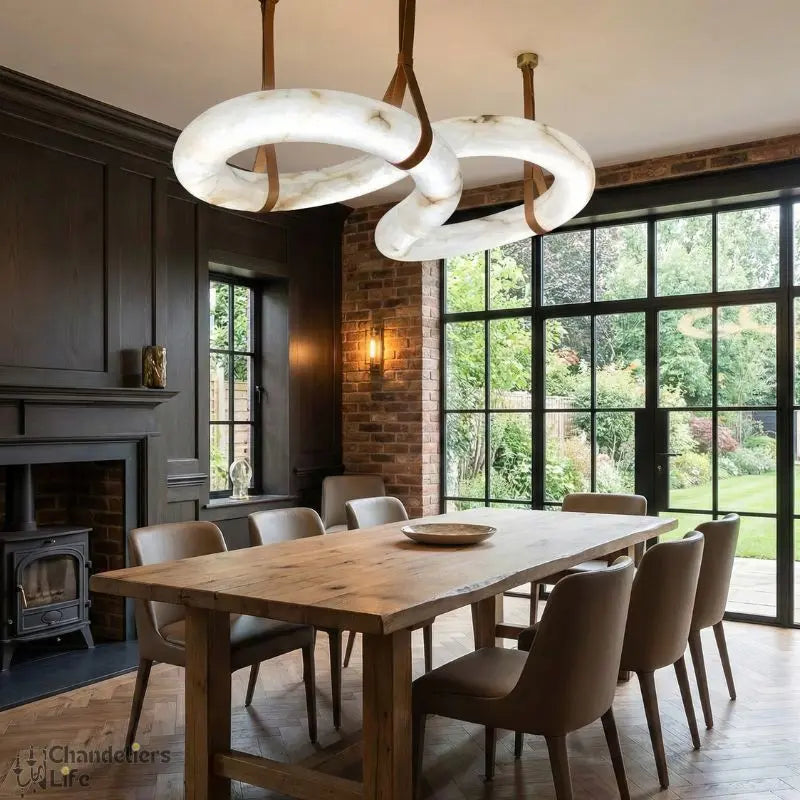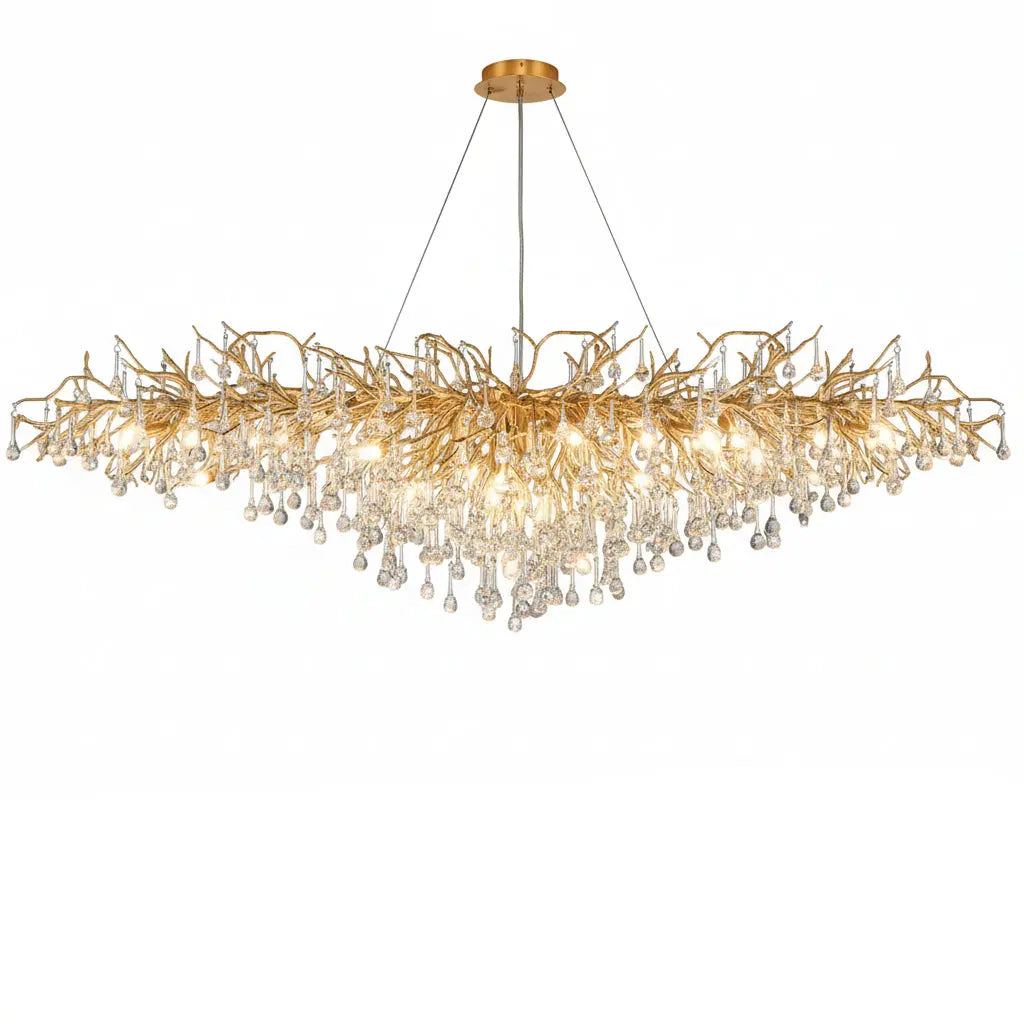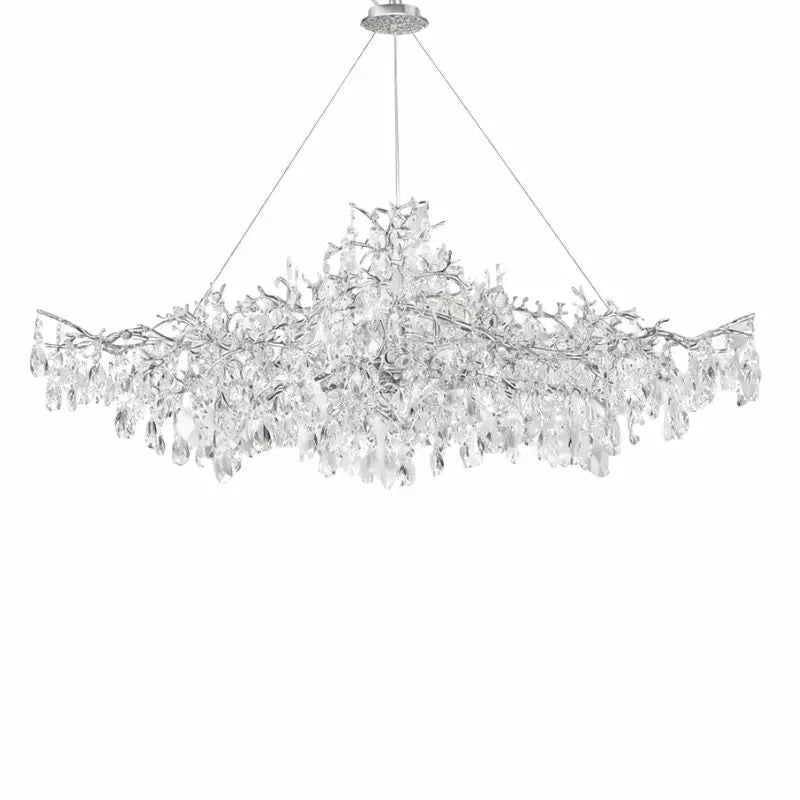Installing a chandelier can add elegance and charm to any room in your home. However, the process of wiring a chandelier can be tricky and requires careful attention to detail. Whether you're a do-it-yourself enthusiast or considering hiring a professional, understanding the basics of chandelier wiring is essential. This guide will walk you through the necessary steps and precautions to ensure a safe and successful installation.
Key Takeaways
- Always turn off the power at the circuit breaker before starting any electrical work.
- Identify the wires correctly to avoid damaging your chandelier or causing electrical hazards.
- Use the right tools and materials to ensure a secure and reliable installation.
- Consider hiring a professional electrician if you're not comfortable with electrical work.
- Regularly inspect and maintain your chandelier's wiring to ensure it remains in good working condition.
Understanding Chandelier Wiring Basics
Identifying Wires
Before you start, it's crucial to know which wire is which. Most chandeliers have three main wires: load (black), neutral (white), and ground. The load wire carries the current, the neutral wire completes the circuit, and the ground wire is for safety. If your chandelier wires aren't color-coded, look for ridges or bumps on the insulation to identify them.
Safety Precautions
Safety should always come first. Always turn off the power at the circuit breaker before you begin any electrical work. Use a voltage tester to ensure the power is off. Never work on live wires. Wear rubber-soled shoes and avoid wet areas to reduce the risk of electric shock.
Common Mistakes to Avoid
One common mistake is not matching the wires correctly. Always connect the load wire to the load, neutral to neutral, and ground to ground. Another mistake is not securing the wire connections properly. Use wire caps and electrical tape to keep connections secure. Lastly, don't forget to check the electrical requirements of your chandelier to avoid overloading the circuit.
Taking the time to understand the wiring basics can save you from damaging your new chandelier and ensure a safe installation.
Tools and Materials Needed for Chandelier Wiring
Essential Tools
To wire a chandelier, you'll need a few basic tools. A 4-in-1 screwdriver is very handy for various screws. Needle-nose pliers help with bending and twisting wires. A non-contact voltage tester ensures the power is off before you start. A stepladder is essential for reaching the ceiling. Wire strippers make it easy to remove the insulation from wires.
Recommended Materials
You'll also need some materials. Electrical tape or heat shrink tubing is used to cover wire connections. An electrical box is necessary to house the wiring. A 10-32 ground screw is used for grounding. Light bulbs and a light texture might be needed, depending on your chandelier.
Safety Gear
Safety is crucial when working with electricity. Always wear safety glasses to protect your eyes from debris. Gloves can help prevent electric shocks. A voltage tester is essential to ensure no live wires are present before you start working.
Prepping to wire your chandelier by gathering all your tools and supplies will make the job easier and safer. Make sure everything is within reach before you start working close to the ceiling.
Step-by-Step Guide to Wiring Your Chandelier
Wiring a chandelier might seem tricky, but with the right steps, you can do it yourself. Follow this guide to ensure a safe and successful installation.
Preparing the Ceiling
Before you start, make sure the power is off at the circuit breaker. Safety first! Remove the old fixture and inspect the electrical box to ensure it's strong enough to support your chandelier. If needed, install a new box designed for heavy fixtures.
Connecting the Wires
Match the chandelier wires to the ceiling wires: black to black (hot), white to white (neutral), and green or bare to ground. Use wire nuts to secure the connections. If your chandelier has a lot of wires, keep them organized with electrical tape.
Securing the Chandelier
Once the wires are connected, carefully lift the chandelier and attach it to the mounting bracket. Make sure it's secure and level. Tighten all screws and double-check your work.
Installing a chandelier can transform a room into an illuminated masterpiece. Even though wiring multiple lights may sound complex, you can complete it on your own with some basic tools and electrical knowledge.
Troubleshooting Common Wiring Issues
Identifying Problems
When your chandelier isn't working, the first step is to identify the problem. Check if the power supply is off by turning the light switch on and off. Use an electricity tester to ensure there's no power flow in the wires. Once confirmed, inspect the wires in the electrical box. Familiarize yourself with the ground, hot, and neutral wires, each having a different color.
Fixing Loose Connections
Loose connections are a common issue. To fix them, first, turn off the power at the main circuit panel. Then, expose the bare wire and check for any worn-out wires. If you find any, replace them by locating the connection junctions, cutting off the old wires, and attaching new ones. Make sure all connections are tight and secure.
When to Call a Professional
Sometimes, the problem might be too complex to handle on your own. If you can't identify the issue or if fixing it seems too difficult, it's best to hire a professional. They have the expertise to ensure the job is done safely and correctly. Hiring a professional can save you time and prevent potential hazards.
If you're unsure about any step, it's always safer to consult a professional. Your safety should be the top priority.
Hiring a Professional Electrician for Chandelier Installation
When it comes to installing a chandelier, getting expert help is often the best choice. While some homeowners might think they can do it themselves, hiring a professional electrician can save you time and prevent potential issues. Here are some key points to consider:
- Experience Matters: Look for an electrician who has experience specifically with chandelier installations. This type of wiring is different from other fixtures in your home, and an expert will know the right techniques to use.
- Safety First: Working with electricity can be dangerous. A professional will ensure that everything is installed safely and securely, reducing the risk of accidents.
- Cost Considerations: While hiring an electrician may seem like an extra expense, it can actually save you money in the long run by preventing damage to your chandelier or home.
| Factor | DIY Installation | Professional Installation |
|---|---|---|
| Safety | High Risk | Low Risk |
| Time | Time-Consuming | Efficient |
| Cost | Potential Damage | Fixed Price |
| Quality of Work | Variable | Guaranteed |
Remember, a well-installed chandelier not only enhances your home’s beauty but also ensures safety and functionality.
In summary, while it might be tempting to try and install a chandelier on your own, the benefits of hiring a professional electrician far outweigh the risks. They can provide restoration tips for wrought iron chandeliers, emphasizing rewiring, safety considerations, modernizing components, testing, and aesthetic enhancements like polishing and crystal restringing.
Safety Tips for DIY Chandelier Wiring
Wiring a chandelier yourself can save money, but it's important to follow safety tips to avoid risks. Always turn off the power before starting any electrical work. Use a voltage tester to ensure no electricity is flowing through the wires. Proper grounding techniques are essential to prevent electrical shocks.
Turning Off Power
Before you start, make sure to turn off the power at the circuit breaker. This step is crucial to avoid any accidental shocks. Double-check that the power is off by using a voltage tester on the wires.
Using a Voltage Tester
A voltage tester is a handy tool to confirm that no electricity is running through the wires. Simply touch the tester to the wires to ensure they are safe to handle.
Proper Grounding Techniques
Grounding your chandelier is important for safety. Connect the ground wire from the chandelier to the ground wire in the ceiling. This helps prevent electrical shocks and ensures your chandelier is safely installed.
Remember, working with electricity can be dangerous. If you're unsure about any step, it's best to consult a professional.
Maintaining Your Chandelier's Wiring
Regular Inspections
Regular inspections are crucial to ensure your chandelier remains in good working condition. Check for any signs of wear or damage to the wires, such as fraying or exposed copper. If you notice any issues, it's important to address them immediately to prevent potential hazards.
Cleaning Tips
Keeping your chandelier clean not only enhances its appearance but also helps maintain its wiring. Dust and debris can accumulate on the wires and connections, leading to potential problems. Use a soft cloth to gently wipe down the chandelier and avoid using harsh chemicals that could damage the wiring.
Upgrading Wiring
If your chandelier is older, it might be time to consider upgrading the wiring. Modern wiring is more efficient and safer, reducing the risk of electrical issues. Consult a professional to ensure the upgrade is done correctly and safely.
Regular maintenance and timely upgrades can extend the life of your chandelier and keep your home safe.
By following these simple steps, you can keep your chandelier shining brightly and safely for years to come.
Keeping your chandelier's wiring in good shape is key to its longevity and safety. Regularly check for any frayed wires or loose connections. If you spot any issues, it's best to call a professional. For more tips and expert advice on chandelier maintenance, visit our website.
Conclusion
Installing a chandelier can truly elevate the look and feel of any room in your home. While it might seem like a fun DIY project, it's important to understand the complexities involved in wiring and installation. If you're not confident in your electrical skills, it's always a good idea to hire a professional to ensure everything is done safely and correctly. Remember, a well-installed chandelier not only adds beauty but also ensures the safety of your home. Whether you choose to tackle the project yourself or call in an expert, the end result will be a stunning centerpiece that brightens up your space.
Frequently Asked Questions
Do I need an electrician to install a chandelier?
While it's possible to install a chandelier yourself, hiring an electrician ensures the job is done safely and correctly. If you're not comfortable with electrical work, it's best to call a professional.
What tools do I need to wire a chandelier?
You'll need a voltage tester, wire strippers, a screwdriver, and possibly a ladder. Safety gear like gloves and goggles are also important.
How do I identify the wires on my chandelier?
Typically, the wire with ridges or bumps is the neutral wire. The smooth wire is usually the hot wire. Always check the manufacturer's instructions.
What safety precautions should I take when wiring a chandelier?
Always turn off the power at the circuit breaker before starting. Use a voltage tester to make sure the power is off. Wear safety gear like gloves and goggles.
What should I do if my chandelier isn't working after installation?
Double-check all your connections and make sure the wires are securely fastened. If it still doesn't work, you may need to call a professional electrician.
How often should I inspect my chandelier's wiring?
It's a good idea to check the wiring at least once a year. Look for any signs of wear or damage and make sure all connections are secure.









































